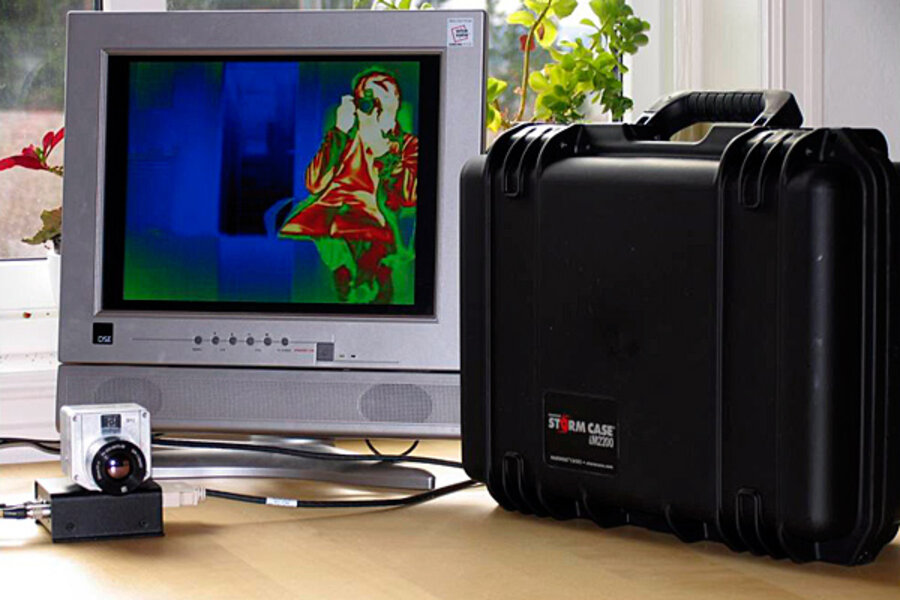Available now: a volcanic ash detector for aircraft
Loading...
| Boston
If Boeing or Airbus had listened to Fred Prata, Europe might not have had to shut down their skies to aircraft for a week.
Atmospheric scientist Dr. Prata has developed a volcanic ash detector that allows aircraft to see the microscopic floating ash and avoid it. In fact, he’s got six units sitting on a shelf.
Iceland’s volcanic ash cloud drifting over Europe is invisible to radar. It’s too small to be seen. But Prata’s device relies on infrared wavelength detection.
“It detects the volcanic silicates that absorb infrared radiation,” explains Prata, who now works at the Norwegian Institute for Air Research (NILU) in Kjeller. The airborne silicates are the tiny pieces of volcanic glass and rocks that get sucked into jet engines and pelt aircraft windshields and instruments.
He says the device can also be configured to detect ice in clouds and certain kinds of clear air turbulence (also invisible to most radar).
The ash detector, developed with funding by the Australian government’s Commonwealth Scientific and Research Organization (CSIRO), where Prata worked for 21 years, has been field tested several times. But during that period, interest in it has ebbed and flowed.
Is this an invention whose time has come?
“An early prototype was taken to Sakurajima in Japan in 1991-1993…. Then we stopped development for lack of interest. We had another go in 2003 when a company called Tenix [in Australia] got interested.
We then took it to Etna, Stromboli [volcanos in Italy], Tavurvur (Papua New Guinea) and Anatahan (N. Mariana Islands). We needed reliable volcanic activity and these were the volcanoes that were active at the time.
We were successful but my employer CSIRO grew impatient and shut the project down,” says Prata.
In 2006, Prata left Australia for Norway. Although, he’s knocked on doors at Boeing and Airbus, the world’s largest commercial aircraft manufacturers, no one has seen the need to add a volcanic ash detector to the instrument array in an aircraft cockpit. Volcanic ash wasn’t a problem that occurred often enough – until now.
Volcanologists aren’t sure how much longer Eyjafjallajökull will spew plums of ash into the atmosphere. The last time it erupted, in 1821, it puffed for 14 months. And what about its now sleeping, but sometimes angry sister Katla?
As some airports in Europe reopened Tuesday, scientists cautioned that what’s most needed is better data on how much ash aircraft engines can ingest. “I think starting to fly cautiously is the right course. But as they fly, please collect information about what happens to the aircraft and communicate it,” says Bill Rose, a volcanologist and professor at Michigan Technological University in Houghton. “We need to know more about what level of volcanic ash creates a significant risk to aircraft,” says Dr. Rose.
And Rose adds that Prata’s volcanic ash detector is an avenue that should be explored further.
“I have six imaging systems,” says Prata, “that could be used on research aircraft but would need some changes to adapt them for use on commercial aircraft. On business jets it may be much easier.”
The cost of each system? About $30,000, he says. But after more development and certification, the cost could rise to $100,000 each.
The airline industry estimates that it's losing $250 million per day due to canceled flights. Against those numbers, Prata’s volcanic ash detector may now seem like a bargain.





